|
Books Should Be Free Loyal Books Free Public Domain Audiobooks & eBook Downloads |
|
|
Books Should Be Free Loyal Books Free Public Domain Audiobooks & eBook Downloads |
|
Top Authors |
|---|
|
Book type:
Sort by:
|
By: Mary Elizabeth Braddon (1835-1915) | |
|---|---|
 Phantom Fortune, A Novel
Phantom Fortune, A Novel
Lady Maulevrier was once a beautiful socialite, beloved and welcomed in London high society. But her life took a turn for the worse when her husband, whom she married only for his fortune, committed a terrible crime in India. Forty years later, she is taking care of her two granddaughters, Mary and Lesbia. She prefers Lesbia, because of her beauty. Therefore, the relationship between the sisters is tolerable at best. Mary marries the man of her dreams while Lesbia enters London society under the wing of her grandmother's faithful friend... | |
By: Anne MacLanahan Grenfell (1885-1938) | |
|---|---|
 Le Petit Nord
Le Petit Nord
A collection of letters from Anne (MacLanahan) Grenfell, future wife of Sir Wilfred Grenfell, regarding her year of missionary service at the orphanage in St. Anthony, Newfoundland and Labrador, Canada. | |
By: Rick Raphael (1919-1994) | |
|---|---|
 Make Mine Homogenized
Make Mine Homogenized
Just sixty miles from ground zero in Nevada there lies Circle T Ranch run by Hetty Thompson the owner, Barney Hatfield the farmhand, and Johnny Culpepper the assistant manager. It was just another ordinary ranch until, that is, the two cows and the roster hit the nuclear jackpot.(Introduction by Jeanie1914) | |
By: Frances Sheridan | |
|---|---|
 Memoirs of Miss Sidney Bidulph
Memoirs of Miss Sidney Bidulph
Sidney and Cecilia are best childhood friends who are forced to part for 5 years. In that interval, Sidney Bidulph - an undoubtedly good and dutiful woman - writes to her friend about everything: her marriage, her children, her other friendships and, above all, about her great love for Mr. Faulkland. In an amazing and unforgettable way, this book shows us that the road to happiness is not always clear - and that sometimes doing what seems to be right is not really the right thing to do. With Rachel's lovely reading, we see her - Sidney Bidulph - as she was meant to be, and as she really is. | |
By: Mary Cowden Clarke (1809-1898) | |
|---|---|
 Ophelia, the Rose of Elsinore
Ophelia, the Rose of Elsinore
This story is from Mary Cowden Clarke’s multi-volume work The Girlhood of Shakespeare’s Heroines, in which she imagined the early lives of characters from Portia to Beatrice to Lady Macbeth. In her revision of Ophelia from Hamlet, she creates a backstory for Shakespeare’s tragic heroine, from her infancy to just before the action of Hamlet begins. | |
By: Langdon Mitchell (1862-1935) | |
|---|---|
 The New York Idea
The New York Idea
I find it very hard to classify "The New York Idea" under any of the established rubrics. It is rather too extravagant to rank as a comedy; it is much too serious in its purport, too searching in its character-delineation and too thoughtful in its wit, to be treated as a mere farce. Its title—not, perhaps, a very happy one—is explained in this saying of one of the characters: "Marry for whim and leave the rest to the divorce court—that's the New York idea of marriage." Like all the plays,... | |
By: editor: Frank Munsey | |
|---|---|
 The Scrap Book Sampler
The Scrap Book Sampler
18 works -- two non-fic articles & one short fiction or poetry each -- from issues March, April, May, June, July, & August 1906 of The Scrap Book, Volume 1, edited by Frank Munsey. As he states in the editorial of the April 1906 issue (Vol 1, Iss 2) this was a sort of supplement to the editor's popular monthly, Munsey's Magazine. The Scrap Book is very like an American version of Punch with many short, often humorous articles interspersed with at least one short story, some poetry, and several longer non-fic pieces. The Scrap Book ran up to 1922. | |
By: Thomas Dowler Murphy (1866-1928) | |
|---|---|
 British Highways And Byways From A Motor Car
British Highways And Byways From A Motor Car
In this chronicle of a summer's motoring in Britain I have not attempted a guide-book in any sense, yet the maps, together with the comments on highways, towns, and country, should be of some value even in that capacity. I hope, however, that the book, with its many illustrations and its record of visits to out-of-the way places, may be acceptable to those who may desire to tour Britain by rail or cycle as well as by motor car. Nor may it be entirely uninteresting to those who may not expect to visit the country in person but desire to learn more of it and its people. (Introduction by Thomas Dowler Murphy) | |
By: Neil Boyton, S.J. (1884-1956) | |
|---|---|
 Killgloom Park
Killgloom Park
Join Angelo Daily and his chums during a fun filled summer at Killgloom Park, a Coney Island, New York amusement park in the 1930's. A runaway tiger! Tracking down a wanted thief! Climbing down a ferris wheel in the middle of the night! These are just a few of the exciting things that happen during this adventurous summer!The author grew up in the world of amusement parks, providing first hand material for two of his boys books – “On the Sands of Coney” and its sequel, this title - “Killgloom Park”... | |
By: Edward S. Ellis (1840-1916) | |
|---|---|
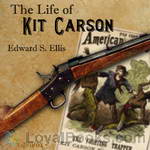 The Life of Kit Carson
The Life of Kit Carson
Christopher Carson, or as he was familiarly called, Kit Carson, was a man whose real worth was understood only by those with whom he was associated or who closely studied his character. He was more than hunter, trapper, guide, Indian agent and Colonel in the United States Army....His lot was cast on the extreme western frontier, where, when but a youth, he earned the respect of the tough and frequently lawless men with whom he came in contact. Integrity, bravery, loyalty to friends, marvelous quickness... | |
 Steam Man of the Prairies
Steam Man of the Prairies
Ethan Hopkins and Mickey McSquizzle-a "Yankee" and an "Irishman"-encounter a colossal, steam-powered man in the American prairies. This steam-man was constructed by Johnny Brainerd, a teenaged boy, who uses the steam-man to carry him in a carriage on various adventures. | |
By: William Jackson | |
|---|---|
 Extracts from The New and Complete Newgate Calendar
Extracts from The New and Complete Newgate Calendar
Volume One of the New and Complete Newgate Calendar, covering the years 1700 through 1723, relates stories of British trials, the persons accused and the crimes committed. It is primarily based upon contemporary newspaper and pamphlet accounts of these trials. Where the criminal is particularly well known, such as the highwayman, burglar and escape artist Jack Sheppard, other sources were used as well. The readings used here are selected to illustrate different aspects of the eighteenth century criminal world and the British legal system. | |
By: Marie Curie (1867-1934) | |
|---|---|
 Radioactive Substances
Radioactive Substances
Marie Curie, born in Warsaw in 1867, was a French physicist and chemist famous for her work on radioactivity. She was a pioneer in the field of radioactivity and the first person honored with two Nobel Prizes - in physics (1903) and chemistry (1911). The risks of working with strongly radioactive materials were not known at that time, and she eventually died in 1934 from an illness likely caused by radiation poisoning.Radioactive Substances is the thesis of Marie Curie, presented to the Faculté de Sciences de Paris in 1903, and subsequently published in "Chemical News" vol 88, 1903... | |
By: John Addington Symonds (1840-1893) | |
|---|---|
 A Problem in Modern Ethics
A Problem in Modern Ethics
“Society lies under the spell of ancient terrorism and coagulated errors. Science is either wilfully hypocritical or radically misinformed.” John Addington Symonds struck many an heroic note in this courageous (albeit anonymously circulated) essay. He is a worthy Virgil guiding the reader through the Inferno of suffering which emerging medico-legal definitions of the sexually deviant were prepared to inflict on his century and on the one which followed. Symonds pleads for sane human values in... | |
By: Charles Norris Williamson | |
|---|---|
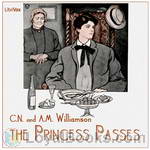 The Princess Passes
The Princess Passes
An American heiress nicknamed the Manitou Princess (after her daddy’s richest silver mine) is devastated to find that her fiancé only loves her money, so she does what anyone might do: she bolts for Europe, dons male attire and sets out on a walking tour of the Alps, passing as a teenage boy. Though professing hatred of all men, she soon falls in with a just-jilted English lord, aptly named Monty Lane, who is attempting to walk off a broken heart of his own. The Princess Passes presents the ups and downs of their alpine relationship through the unpenetrating eyes of Lord Lane... | |
By: Amelia Opie (1769-1853) | |
|---|---|
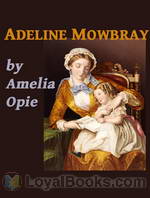 Adeline Mowbray
Adeline Mowbray
Everybody makes mistakes, and everything has a price. This novel describes, according to it's name, the life of Adeline Mowbray, full of everything: sorrow, happiness, falsehood, truth, kindness, and mistakes. This novel is an exploration of the human heart. Be prepaired for a strong and enjoyable read. | |
By: Alfred Dreyfus (1859-1935) | |
|---|---|
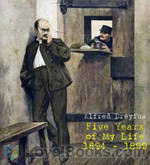 Five Years of My Life 1894-1899
Five Years of My Life 1894-1899
Alfred Dreyfus, a Jewish captain in the French Army was court martialed in 1894 on a trumped up charge of treason and condemned to life imprisonment on Devil’s island, a penal colony off French Guiana. His prison diary, published as Five Years of My Life in 1901 is a heroic tale of survival against daunting odds: isolation, deprivation, torture . . Alfred left behind in Paris his wife Lucie, who, forbidden to join her husband in exile, struggled to protect their two children from the rampant anti-Semitism that swirled about them, while she begged her husband to hold onto life as she tried to clear his name... | |
By: Timothy S. Arthur (1809-1885) | |
|---|---|
 Off-hand Sketches
Off-hand Sketches
The reader cannot but smile at some of the phases of life presented in this volume. Yet the smile will, in no case, the author thinks, be at the expense of humanity, good feeling, or virtue. Many of the incidents given, are facts embellished by a few touches of fancy. In all, lessons may be read that some, at least, will do well to lay to heart. | |
By: Joseph Munk (1847-1927) | |
|---|---|
 Arizona Sketches
Arizona Sketches
An introduction to Arizona from approximately a century ago. | |
By: Dame Rose Macaulay (1881-1958) | |
|---|---|
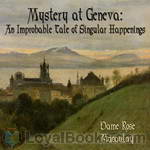 Mystery at Geneva: An Improbable Tale of Singular Happenings
Mystery at Geneva: An Improbable Tale of Singular Happenings
Henry Beechtree, a newspaper correspondent for the British Bolshevist, is covering the latest otherwise sleepy session of the League of Nations in Geneva, when the newly elected President – a member of the Norwegian delegation – disappears mysteriously, adding some badly needed ‘spice’ to Henry's assignment. (Introduction by Cathy Barratt) | |
By: George Douglas Watson (1845-1924) | |
|---|---|
 Soul Food
Soul Food
A guide for Christians to walk a godly life. Covering various practical and spiritual topics. | |
By: Rex Beach (1877-1949) | |
|---|---|
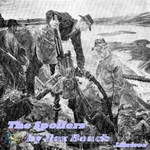 The Spoilers
The Spoilers
MANUAL OF SURGERY, OXFORD MEDICAL PUBLICATIONSBY ALEXIS THOMSON, F.R.C.S.Ed.PREFACE TO SIXTH EDITION Much has happened since this Manual was last revised, and many surgical lessons have been learned in the hard school of war. Some may yet have to be unlearned, and others have but little bearing on the problems presented to the civilian surgeon. Save in its broadest principles, the surgery of warfare is a thing apart from the general surgery of civil life, and the exhaustive literature now available on every aspect of it makes it unnecessary that it should receive detailed consideration in a manual for students... | |
By: Albertus Magnus (1193-1280) | |
|---|---|
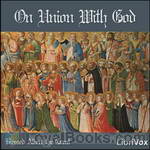 On Union With God
On Union With God
Surely the most deeply-rooted need of the human soul, its purest aspiration, is for the closest possible union with God. As one turns over the pages of this little work, written by Blessed Albert the Great towards the end of his life, when that great soul had ripened and matured, one feels that here indeed is the ideal of one's hopes. (From the Preface) | |
By: Percy Fitzpatrick | |
|---|---|
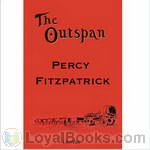 The Outspan: Tales of South Africa
The Outspan: Tales of South Africa
Six poignant short stories reminiscent of life as a transport rider in the Transvaal veld in the days of the gold rush in South Africa at the end of the 19th century. From an early age Fitzpatrick believed that life should be enjoyed to the full and his honest and often moving style of writing leaves one richer for having known him. | |
By: Mary Augusta Ward (1851-1920) | |
|---|---|
 Lady Rose's Daughter
Lady Rose's Daughter
"Julie Le Breton enchants almost everyone around her with her smart, charm, and excellent manners. She almost belongs to the English highest nobility, but just almost… Her parents, 2 aristocrats who ran away from England in order to be together, could never marry - because her mother was married to someone else. Therefore, she is forced to work for the cruel Lady Henry Delafield, who hates her. She has a few good friends, amongst whom are 2 admirers… And that is only the beginning. This is a compelling drama, set mostly in England, among the English aristocracy... | |
By: Louis Joseph Vance (1879-1933) | |
|---|---|
 The Lone Wolf
The Lone Wolf
The Lone Wolf is the first of eight books in a series featuring the jewel thief turned private detective Michael Lanyard. With his identity betrayed and the police on his heels, he must fly from Paris, which is made much more difficult by his self-imposed duty to take care of the beautiful Lucia, who has a dark secret of her own...A large number of movies have been based on the books. | |
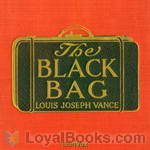 The Black Bag
The Black Bag
Mr. Philip Kirkwood, a not so successful painter, receives a visitor from his home town in America, who wants him to do him an unspecified favor, but Kirkwood doesn't trust him and sends him away. That night, he sees the stranger dine with his beautiful daughter. In order to protect the girl, the stranger confesses to Kirkwood that he expects to be arrested upon leaving the restaurant. Kirkwood agrees to take care of the girl, but when he brings her home, he knows that she is in danger and that there must be a mystery attached. He decides to protect the girl... | |
 The False Faces
The False Faces
This is the second book in the Lone Wolf series. Michael Lanyard had turned his back on his career as gentleman-thief and started a respectable life, when World War I wrecks his life. With his family dead and the spy Ekstrom alive after all, his special skills as the Lone Wolf are needed once more, this time in the war behind enemy lines. But again, there is a mysterious woman involved... | |
 Red Masquerade
Red Masquerade
In the beginning of his career, Michael Lanyard alias The Lone Wolf, the most talented thief of his day, made the acquaintance of the beautiful Princess Sofia, but he also made an enemy of her husband, Prince Victor. Years later, Lanyard's daughter gets into the crossfiere... Red Masquerade is the third book in the Lone Wolf Series. | |
By: Charles E. Jefferson (1860-1937) | |
|---|---|
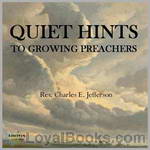 Quiet Hints to Growing Preachers
Quiet Hints to Growing Preachers
Charles Edward Jefferson was pastor of the Broadway Tabernacle in Brooklyn, New York for 33 years. In Quiet Hints, published in 1901, he provided guidance to young preachers on what we would today call ministerial deportment, an old-fashioned word that refers to how a man carries himself, how he presents himself, his manners, his bearing, his habits, and his whole approach to life. Jefferson wrote in short, pithy statements that encapsulate practical truth in just a few words. | |
By: Jean Racine (1639-1699) | |
|---|---|
 Phaedra
Phaedra
In the court of Louis XIV, adaptations of Greek tragedies were very popular. This play, heavily influenced by Euripides' Hippolytus, deals with love that violates social taboos. Note: In Racine's work, a new "scene" begins whenever a character enters or exits. Therefore, there are no stage directions, only a list of the characters on stage for each scene. The action is continuous for the entire act. | |
By: John Leighton (1822-1912) | |
|---|---|
 Christmas Comes but Once a Year
Christmas Comes but Once a Year
A Christmas tale of John Brown's ghastly family (suburban snobs), Captain Bonaventure de Camp and his equally awful brood (a dubious crew), and poor Soavo Spohf, organist of St. Stiff the Martyr, gifted in musical ability but not blessed in looks or love. No-one could call this a great work of literature, but it definitely raises a few chuckles and it also offers a fascinating glimpse into Christmas festivities and social mores in well-to-do households in the mid-19th century. (Introduction by Ruth Golding) | |
By: Hugo Münsterberg (1863-1916) | |
|---|---|
 Psychotherapy
Psychotherapy
Talking about viewing the Ocean "If I take the attitude of appreciation, it would be absurd to say that this wave is composed of chemical elements which I do not see; and if I take the attitude of physical explanation, it would be equally absurd to deny that such elements are all of which the wave is made. From the one standpoint, the ocean is really excited; from the other standpoint, the molecules are moving according to the laws of hydrodynamics. If I want to understand the meaning of this scene every reminiscence of physics will lead me astray; if I want to calculate the movement of my boat, physics alone can help me".(from the Introduction) | |
By: Asa Don Dickinson (1876-1960) | |
|---|---|
 Good Cheer Stories Every Child Should Know
Good Cheer Stories Every Child Should Know
This charming book has many stories that deal mostly with the holiday of Thanksgiving, perfectly suited for family listening and reading. and gathers in one volume tales of tasty turkeys, festive parties, generous gestures, and holiday cheer. The stories featured include works by such writers as Harriet Beecher Stowe, George Eliot, Nathaniel Hawthorne, and others. So if you want to listen to some great stories that bring out gratitude for life and a thanksgiving attitude, here are a bunch of the best. | |
By: George Washington Cable (1844-1925) | |
|---|---|
 Bonaventure, A Prose Pastoral of Acadian Louisiana
Bonaventure, A Prose Pastoral of Acadian Louisiana
This is a gentle, delightful story of life and love on the bayoux of Acadian Louisiana during the latter half of the 19th century. Bonaventure is a Creole raised among the Acadians. He loves learning, and through his calling as a teacher, and his own unique force of character, comes to have a lasting effect on the people around him. A word of warning: This story has occasional references to Jews and African Americans that the modern mind finds offensive. They are retained here in the interest of preserving the original text. | |
By: Harriet T. Comstock (1860-1925) | |
|---|---|
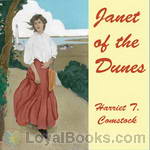 Janet of the Dunes
Janet of the Dunes
Known primarily for her children's books, Harriet T. Comstock would occasionally depart from that genre and showcase her writing talent in adult prose as well. Janet of the Dunes is one such departure wherein she masterfully takes us into the lives of the bold men and women who tended those life saving stations along the seaboard which many a ship relied upon for their safety. They were simple people, large of heart and as close-knit as a tiny community can and must ever be, and they, above all else, took their duties very seriously... | |
By: Mary E Wilkins Freeman | |
|---|---|
 Edgewater People
Edgewater People
A collection of interrelated short stories concerning the townfolk of a few small New England villages at the turn of the last century. | |
By: Katherine Philips (1632-1664) | |
|---|---|
 Poems by the Most Deservedly Admired Mrs. Katherine Philips, The Matchless Orinda
Poems by the Most Deservedly Admired Mrs. Katherine Philips, The Matchless Orinda
The poet Katherine Philips was called “The Matchless Orinda” in her day and was well known for her works, both personal and political. She was a staunch Royalist (a supporter of Charles I and his son during the English Civil Wars) and wrote poetic defenses of the monarchy. She was also part of a literary coterie, in which she and her friends had “code names.” Philips herself was “Orinda,” her husband “Antenor,” and her friend Anne Owen “Lucasia.” She is perhaps best known today for her passionate poems celebrating female friendship. | |
By: George Borrow (1803-1881) | |
|---|---|
 Welsh And Their Literature
Welsh And Their Literature
Originally an article in the US Edition of the London Quarterly Review, George Borrow offers a sweeping history of Welsh literature, beginning with the legendary origin of the Welsh people, then their major bards and poets, and then their works of prose. Many examples are offered. | |
By: Sister M. Imelda Wallace, S.L. (1884-?) | |
|---|---|
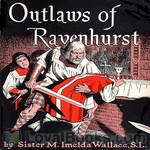 Outlaws of Ravenhurst
Outlaws of Ravenhurst
This exciting historical adventure depicts the last stand of the Gordons - God's "outlaws" - fighting for their Catholic Faith in the early days of the Protestant Revolution in seventeenth-century Scotland. | |
By: Charles F. Horne (1870-1942) | |
|---|---|
 Great Men and Famous Women, Vol. 1
Great Men and Famous Women, Vol. 1
Great Men and Famous Women is an 8-volume work by various authors containing “A series of pen and pencil sketches of the lives of more than 200 of the most prominent personages in History.” The set is edited by Charles F. Horne, a prolific American author who wrote mainly history. The focus of Volume 1 is “Soldiers and Sailors”. | |
By: Howard R. Garis (1873-1962) | |
|---|---|
 Uncle Wiggily's Adventures
Uncle Wiggily's Adventures
Due to Uncle Wiggily's rheumatism being so very bad, Dr. Possum prescribes a journey to help him move around, have a change of air, and a good long bout of traveling to get more exercise. So Uncle Wiggily packs his valise and sets forth! | |
 Uncle Wiggily in the Woods
Uncle Wiggily in the Woods
Howard Garis, one of the most prolific children's writers of the 20th century, is credited with writing over 1500 Uncle Wiggily stories. In this collection, the loveable old rabbit stays close to home and visits woodland friends. | |
 Uncle Wiggily and Old Mother Hubbard
Uncle Wiggily and Old Mother Hubbard
Uncle Wiggily Longears, an old bunny gentleman now stricken with rheumatism and getting around with a cane, still is quite active. In these stories, he encounters a string of characters from Mother Goose's tales and has adventures that are not quite in keeping with her books!These gentle tales are 7 - 8 minutes each and quite suited to a nightly reading to a small child. (Intro by Mark F. Smith) | |
 Uncle Wiggily's Travels
Uncle Wiggily's Travels
This is the second of 79 Uncle Wiggily books published and contains another selection of bedtime stories from those originally published in the Newark Evening News every day except Saturday for over 40 years. Uncle Wiggily Longears is a loveable rabbit who suffers from rheumatism and has many woodland friends and innocent adventures. | |
 Lulu, Alice and Jimmie Wibblewobble
Lulu, Alice and Jimmie Wibblewobble
The Wibblewobble family of ducks appear in a series of 31 bedtime stories - one for each day of the month - written by Howard R. Garis. Each story is an adventure featuring the ducks and their neighbors, including Uncle Wiggily Longears, the famous old gentleman rabbit with rheumatism. | |
 Daddy Takes Us Skating
Daddy Takes Us Skating
Hal and Mabel's Daddy knows everything - how a thermometer works, what makes a car go, why we get warm when we run. It's a cold and icy evening after school and Daddy has a secret but what is it? And what is in the mysterious packages he has for the children? The "Daddy" stories were originally published as part of the 'bedtime stories' of the Newark News. | |
 Curly and Floppy Twistytail (The Funny Piggie Boys)
Curly and Floppy Twistytail (The Funny Piggie Boys)
The adventures of two little pig boys and their mom and dad. "Once upon a time, not so very many years ago, in the days when there were fairies and giants and all things like that, there lived in a little house, on the edge of a wood, a family of pigs. Now these pigs weren't like the pigs, which perhaps you children have seen on most farms. No, indeed! They were just the nicest cleanest, sweetest pigs you ever dreamed of—not that pigs on a farm can't be clean, if they want to, but, somehow or other, no one seems to have time to see that they are clean." | |
 Umboo, The Elephant
Umboo, The Elephant
Have you ever wondered what it is like to be in a circus? What if, rather than choosing to be in one, you were captured and taken away from the home and family you knew and made to perform in the heat of a big top? Meet Umboo, the elephant, Chako, the monkey, Snarlie, the tiger and their circus friends and learn how life in the jungle was different from life in the circus. | |
By: George Sutherland (1855-1905) | |
|---|---|
 Twentieth Century Inventions: A Forecast
Twentieth Century Inventions: A Forecast
This work from 1901 predicts what technological developments will manifest in the twentieth century. The author, a technical journalist, presents ideas for inventions and new developments in the areas of power, transportation, agriculture, mining, domestic applications, electronic devices, warfare, music, art, and news. Many have come to pass. All of them provide an interesting look into how the next century was imagined and what challenges were anticipated for the progress of society. - | |
By: Arthur M. Winfield (1862-1930) | |
|---|---|
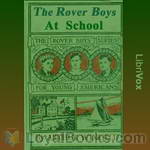 The Rover Boys at School
The Rover Boys at School
First of the famous Rover Boys books by future Hardy Boys creator Edward Stratemeyer (under the pseudonym Arthur M Winfield), this is an introduction to the fun-loving teenage Rover Brothers -- Dick, Tom & Sam. Virtual orphans, they are sent by their prudish Uncle Randolph to a military boarding school and their adventures soon begin! | |
By: Philip Stanhope, 4th Earl of Chesterfield | |
|---|---|
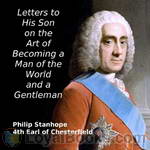 Letters to His Son on the Art of Becoming a Man of the World and a Gentleman
Letters to His Son on the Art of Becoming a Man of the World and a Gentleman
Philip Stanhope, Earl of Chesterfield, was at one time Ambassador to the Hague, negotiated the second Treaty of Vienna, was a founding governor of London’s Foundling Hospital, Lord-Lieutenant of Ireland, and Secretary of State. Having no legitimate children, his heir was his third cousin (another Philip) whom he adopted. Although known as a hard, calculating man, he is most well known for his letters to his natural son (i.e., illegitimate son) (also called Philip). When Philip died in 1768, the letters are addressed to his grandchildren (Philip’s two sons, Charles, and, yes, Philip!)... | |
By: Fa'iz El-Ghusein (1883-1968) | |
|---|---|
 Martyred Armenia
Martyred Armenia
This is a first hand account of the Armenian Genocide written by a Syrian who had been a Turkish official for three and a half years. His accounts tell of the worst of humanity, and also of the noblest. The noble include families who courageously support each other in the face of death, and Turks who refuse to follow orders to kill, knowing that they shall be executed themselves for their defiance. | |
By: Marguerite of Navarre (1492-1549) | |
|---|---|
 Heptameron of the Tales of Margaret, Queen of Navarre, Vol. 1
Heptameron of the Tales of Margaret, Queen of Navarre, Vol. 1
THE HEPTAMERON, first published posthumously in 1558, is divided into seven complete days containing 10 stories each, and an eighth day containing only 2 stories. The stories, many of which deal with love and infidelity, resulted in "accusations of looseness" by critics of the day. The author, Margaret of Navarre (also known as Margaret of Angoulême) became an influential woman in the intellectual and cultural circles of the French Renaissance. From an 1892 essay by the translator George Saintsbury: "In so large a number of stories with so great a variety of subjects, it naturally cannot but be the case that there is a considerable diversity of tone... | |
 Heptameron of the Tales of Margaret, Queen of Navarre, Vol. 3
Heptameron of the Tales of Margaret, Queen of Navarre, Vol. 3
THE HEPTAMERON (here Volume 3 of 5), first published posthumously in 1558, is divided into seven complete days containing 10 stories each, and an eighth day containing only 2 stories. The stories, many of which deal with love and infidelity, resulted in "accusations of looseness" by critics of the day. The author, Margaret of Navarre (also known as Margaret of Angoulême) became an influential woman in the intellectual and cultural circles of the French Renaissance. From an 1892 essay by the translator George Saintsbury: "In so large a number of stories with so great a variety of subjects, it naturally cannot but be the case that there is a considerable diversity of tone... | |
 Heptameron of the Tales of Margaret, Queen of Navarre, Volume 4
Heptameron of the Tales of Margaret, Queen of Navarre, Volume 4
THE HEPTAMERON (here Volume 4 of 5), first published posthumously in 1558, is divided into seven complete days containing 10 stories each, and an eighth day containing only 2 stories. The stories, many of which deal with love and infidelity, resulted in "accusations of looseness" by critics of the day. The author, Margaret of Navarre (also known as Margaret of Angoulême) became an influential woman in the intellectual and cultural circles of the French Renaissance. From an 1892 essay by the translator George Saintsbury: "In so large a number of stories with so great a variety of subjects, it naturally cannot but be the case that there is a considerable diversity of tone... | |
By: Gen. George A. Custer (1839-1876) | |
|---|---|
 My Life on the Plains
My Life on the Plains
George Armstrong Custer (December 5, 1839 – June 25, 1876), one of the most mythologized figures in American history, was an United States Army officer and cavalry commander in the American Civil War and the Indian Wars. He eventually met his fate in the battle of Little Big Horn in one of the most notable defeats of American armed forces.My Life on the Plains is an autobiographical first-hand account of the Indian Wars of 1867-1869, detailing the winter campaign of 1868 in which Custer led the 7th US cavalry against the Cheyenne Indians... | |
By: William Cobbett (1763-1835) | |
|---|---|
 Cottage Economy
Cottage Economy
How can you tell when your pig is fat enough? Why should you never buy mustard? What's wrong with eating potatoes? Which is better, beer or tea? And what type of straw makes the best bonnets? William Cobbett is the man to ask. Here is his book of practical advice to the rural labouring 'cottager' (first published as a part-work in 1821-22), the precursor in many ways to the handbooks on self-sufficiency that today entice so many city-dwellers. A champion of the rural working class at a time of huge... | |
By: Joseph Smith, Jr. (1805-1844) | |
|---|---|
 Book of Mormon
Book of Mormon
The Book of Mormon is a volume of holy scripture comparable to the Bible, used by Latter Day Saints. It is a record of God’s dealings with the ancient inhabitants of the Americas.The book was written by ancient prophets through the spirit of prophecy and revelation. It gives an account of two great civilizations. One came from Jerusalem in 600 B.C., and afterward separated into two nations, known as the Nephites and the Lamanites. The other came much earlier when the Lord confounded the tongues at the Tower of Babel... | |
By: William Cobbett (1763-1835) | |
|---|---|
 Rural Rides
Rural Rides
William Cobbett: 1763-1835 English farmer, journalist and politician. His book Rural Rides collects together the articles published in his Political Register between 1822 and 1826, reflecting conditions of farmers and labourers in the English countryside, together with his views on the necessary actions for remedy and the shortcomings of government in this regard. Although this sounds amazingly dry, his forthright personality, original views and conversational tone, as well as the startling relevance of many of his topics to current political and social issues, give Rural Rides the immediacy and liveliness of a 19th century blog. | |
By: Miriam Michelson (1870-1942) | |
|---|---|
 In the Bishop's Carriage
In the Bishop's Carriage
Nancy 'Nance' Olden, a young and very pretty woman, is an accomplished liar and thief. Raised in a horrific orphanage, called the Cruelty by its occupants, Nance and her criminal boyfriend, Tom Dorgan, are pulling a con when the book begins. The results of their act propel Nance into a series of events that she could never have imagined. This was Miriam Michelson's first novel and it was considered a 'blockbuster' in its day. Ranked fourth on the list of bestsellers of 1904 by "Publishers Weekly," Michelson's book was a source of controversy due to the dubious ethics and morals of its heroine. | |
By: Thomas Bastard (1818-1883) | |
|---|---|
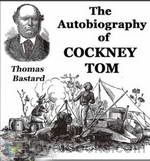 The Autobiography of Cockney Tom
The Autobiography of Cockney Tom
The Autobiography of Cockney Tom, Showing his Struggles through Life, and proving this Truth of the Old Saying "that Honesty is the best Policy". Set in England, South Australia and the goldfields of Victoria Australia in the 1800's. | |
By: Byron A. Dunn (1842-1926) | |
|---|---|
 Raiding with Morgan
Raiding with Morgan
It is a fictional tale of cavalry actions during the U.S. Civil War, under General John Morgan. | |
By: Richard Henry Savage (1846-1903) | |
|---|---|
 The Midnight Passenger
The Midnight Passenger
Randall Clayton was surrounded by enemies. His father’s business partner had looked after him in the years since his father’s death. But Hugh Worthington’s motives were not altruistic – he had a secret to hide and a scheme to bring to fruition that would make him millions at Clayton’s expense. Clayton’s roommate, Arthur Ferris, had his own schemes, including stealing the affections of Worthington’s daughter away from Clayton. Clayton worked for a pittance in New York, where he was watched day and night by Worthington’s spies, and by the ruthless Fritz Braun, who plotted to rob Clayton of the large deposit that he daily carried for his employer... | |
By: John Toland (1670-1722) | |
|---|---|
|
Pantheisticon: or, the Form Of Celebrating the Socratic-Society. Divided into Three Parts. Which Contain, I. The Morals and Axioms of the Pantheists; or the Brotherhood. II. Their Deity and Philosophy. III. Their Liberty, and a Law, neither deceiving, nor to be deceived. To which is prefix’d a Discourse upon the Antient and Modern Societies of the Learned, as also upon the Infinite and Eternal Universe. And subjoined, a short dissertation upon a Two-fold Philosophy of the Pantheists, that is to be followed; together with an Idea of the best and most accomplished Man... | |
By: Cleveland Moffett (1863-1926) | |
|---|---|
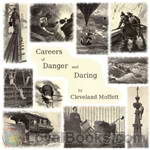 Careers of Danger and Daring
Careers of Danger and Daring
In this volume of adventure the author depicts the lives of certain humble modern heroes whose unconscious courage ordinarily goes unnoticed. Mr. Moffett has chosen unusual and picturesque careers, and has offered dramatic scenes from the lives of the steeple climber, the diver, the balloonist,the pilot, the bridge builder, the fireman, the aerial acrobat, the wild animal trainer, the dynamite worker and lastly the locomotive driver. | |
By: Eva Lecomte | |
|---|---|
 Paula the Waldensian
Paula the Waldensian
Into the home of an interesting but self-centered family in old France comes Paula, a young orphaned cousin, from the little village of Villar, in the Waldensian Valley. Though living very simply, tending cows, goats, sheep and rabbits, Paula has been brought up to know and love the Lord Jesus and read the Scriptures. Her Lord and His Word are the center of her life, and she can no more keep this good news all to herself than she can stop breathing or eating. This causes a good many complications, for her cousins' home was one where "religion" was a forbidden subject, never to be mentioned, and Paula soon found herself forbidden to read her own precious Bible... | |
By: Flavius Philostratus | |
|---|---|
 The Life of Apollonius of Tyana
The Life of Apollonius of Tyana
Apollonius of Tyana (ca. 40-120 AD) was a Greek Pythagorean philosopher and teacher. He hailed from the town of Tyana in the Roman province of Cappadocia in Asia Minor. His date of birth is a matter of conjecture as some say he was roughly a contemporary of Jesus.After Apollonius' death his name remained famous among philosophers and occultists. In a "novelistic invention" inserted in the Historia Augusta, Aurelian, at the siege of Tyana in 272, was said to have experienced a visionary dream in which Aurelian claimed to have seen Apollonius speak to him, beseeching him to spare the city of his birth... | |
By: Charles James Lever (1806-1872) | |
|---|---|
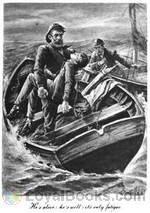 Fortunes of Glencore
Fortunes of Glencore
| |
By: Alice Morse Earle (1851-1911) | |
|---|---|
 Home Life in Colonial Days
Home Life in Colonial Days
CHAPTER I HOMES OF THE COLONISTS When the first settlers landed on American shores, the difficulties in finding or making shelter must have seemed ironical as well as almost unbearable. The colonists found a land magnificent with forest trees of every size and variety, but they had no sawmills, and few saws to cut boards; there was plenty of clay and ample limestone on every side, yet they could have no brick and no mortar; grand boulders of granite and rock were everywhere, yet there was not a single facility for cutting, drawing, or using stone... | |
By: Johanna Brandt (1876-1964) | |
|---|---|
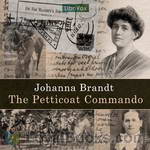 The Petticoat Commando
The Petticoat Commando
In introducing the English version of this book I venture to bespeak a welcome for it, not only for the light which it throws on some little-known incidents of the South African war, but also because of the keen personal interest of the events recorded. It is more than a history. It is a dramatic picture of the hopes and fears, the devotion and bitterness with which some patriotic women in Pretoria watched and, as far as they could, took part in the war which was slowly drawing to its conclusion on the veld outside... | |
By: H. S. Adams (1864-?) | |
|---|---|
 Making a Rock Garden
Making a Rock Garden
A short look at building a rock garden, right from the rocks themselves and how to arrange them, to choosing and placing the plants, touching wall and bog gardens, too. In this little monograph, the author is trying to draw the eyes of U.S. gardeners in to the intimate beauty of this neglected hobby.The original work has a number of attractive and useful photographs and drawings. | |
By: Joe Tilden | |
|---|---|
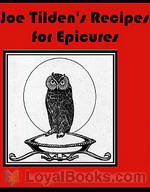 Joe Tilden's Recipes for Epicures
Joe Tilden's Recipes for Epicures
Major Joseph Tilden was in his time one of the most famous Bohemians and epicureans of the Pacific Coast. Ever since his death his many friends have been trying to learn the culinary secrets which made a repast of his devising so delicious. He had given his recipes to but few, and those few his most intimate friends and fellow spirits. One of the most favored of his old companions has given this complete collection of his recipes for publication.San Francisco, May, 1907.(Excerpt from text) | |
By: Annie F. Johnston (1863-1931) | |
|---|---|
 The Little Colonel's House Party
The Little Colonel's House Party
Lloyd Sherman, the "Little Colonel", is a girl of eleven whose mother invites three other girls to spend a month with Lloyd in her beautiful home in Kentucky. The children come from very different homes, but fall into the new ways very readily. The account of their escapades will amuse young readers. A bit of disobedience on the part of one spoiled girl leads to something of a tragedy, in which Betty, the nicest of the children, is the sufferer.This series for girls from the early 1900’s, begun... | |
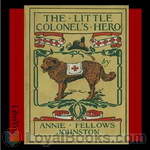 The Little Colonel's Hero
The Little Colonel's Hero
In this sixth volume of “The Little Colonel Series” for girls, Lloyd is surprised with a gift for her twelfth birthday, of a summer trip to Europe. In Geneva she becomes friends with an old Prussian major and his Red Cross dog, a St. Bernard named Hero. Through many adventures, in the end the Little Colonel learns the true meaning of selfless duty. | |
 Little Colonel's Christmas Vacation
Little Colonel's Christmas Vacation
In this delightful story ”The Little Colonel's Christmas Vacation” by Annie Fellows Johnston the Little Colonel, Lloyd Sherman. together with her friends Betty, Kitty and Allison are starting the schoolyear at a new school, Warwick Hall, a Boardingschool for girls in Washington. They find it a wonderful and stimulating place, make many new friends and have many experiences and also adventures there. But Lloyd comes down with high fever shortly before Christmas, and while home on Christmas Vacation she almost breaks down, and the doctor says she must not go back to school but stay at home to regain her health... | |
By: Maria Edgeworth | |
|---|---|
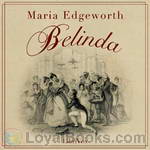 Belinda
Belinda
When Belinda was published in 1801, it became both controversial and popular. Controversial because of the inter-racial marriage presented in the novel, and popular because it's a very good comedy of manners, like Evelina by Fanny Burney. Belinda, like Evelina, is a soft and loving girl of 17, is coming to London with her aunt who directs her action in order to make sure that she'll find a good match. But what will happen if Belinda will fall in love? Will Clarence Hervey, the man she loves, be able to marry her? It seems almost impossible, as he is secretly bringing up another woman to be a perfect wife to him and now, in all honor, he thinks he must marry her... | |
By: Bartolomé de las Casas (1484-1566) | |
|---|---|
 Brief Account of the Destruction of the Indies
Brief Account of the Destruction of the Indies
A Short Account of the Destruction of the Indies (Spanish: Brevísima relación de la destrucción de las Indias) is an account written by the Spanish Dominican friar Bartolomé de las Casas in 1542 (published in 1552) about the mistreatment of the indigenous peoples of the Americas in colonial times and sent to then Prince Philip II of Spain. One of the stated purposes for writing the account is his fear of Spain coming under divine punishment and his concern for the souls of the Native Peoples... | |
By: Maria Edgeworth (1768-1849) | |
|---|---|
 Castle Rackrent
Castle Rackrent
| |
By: Mildred Aldrich (1853-1928) | |
|---|---|
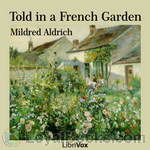 Told in a French Garden
Told in a French Garden
American friends begin to summer in a beautiful French country house when WWI breaks out. They decide not to evacuate as the war encroaches. Their interactions are interwoven by the stories that they take turns telling after dinner each night to stimulate their nightly conversation and distract their thoughts from the war. | |
By: Caroline Lockhart (1871-1962) | |
|---|---|
 The Fighting Shepherdess
The Fighting Shepherdess
A classic style western written by one of the first female western writers. Caroline Lockhart was a rancher, writer and possibly the first woman to go over Glacier National Parks Swiftcurrent Pass. | |
By: William Ralston Shedden-Ralston (1828-1889) | |
|---|---|
 Russian Fairy Tales
Russian Fairy Tales
Russian Fairy Tales is an anthology of stories by a noted Russian scholar and translator. The 51 stories are thematically organized with introductory material to put them both in the context of Russian folklore and in their relation to the myths of other cultures. This text has something for the intellectual reader as well as for someone who just likes a good fairy tale. | |
By: Caroline Lockhart (1871-1962) | |
|---|---|
 Dude Wrangler
Dude Wrangler
Spoiled, handsome, 24 year old Easterner meets pretty, no-nonsense gal from Wyoming, is instantly smitten and does a sea-change to try and impress her in this genial romantic comedy. | |
By: Aiden Wilson Tozer (1897-1963) | |
|---|---|
 The Pursuit of God
The Pursuit of God
"As the heart panteth after the water brooks, so panteth my soul after thee, O God." This thirst for an intimate relationship with God, claims A.W. Tozer, is not for a select few, but should be the experience of every follower of Christ. But, he asserts, it is all too rare when believers have become conditioned by tradition to accept standards of mediocrity, and the church struggles with formality and worldliness. Using examples from Scripture and from the lives of saints who lived with this thirst for God, Tozer sheds light on the path to a closer walk with God. | |
By: Logan Marshall (1884-?) | |
|---|---|
 Wonder Book of Bible Stories
Wonder Book of Bible Stories
It is with the desire of aiding parents and teachers in telling these stories, and aiding children to understand them, also in the hope that they may be read in many schools, that a few among the many interesting stories in the Bible have been chosen, brought together and as far as necessary simplified to meet the minds of the young. - Introduction by Jesse Lyman Hurlbut inside the book itself. | |
By: Alfred Ayres (1826-1902) | |
|---|---|
 The Verbalist
The Verbalist
Ayres arranges usage problems alphabetically and treats certain areas in greater detail as he sees fit. For example, his first entry is A-AN (articles). His second is ABILITY-CAPACITY, in which he distinguishes between the meanings. The alphabetical arrangement continues through to YOURS. (Introduction by Bill Boerst) | |
By: Nathaniel Parker Willis (1806-1867) | |
|---|---|
 Declaration
Declaration
Nathaniel Parker Willis is also known as N. P. Willis. He was an American author, poet and editor who worked with several notable American writers including Edgar Allan Poe and Henry Wadsworth Longfellow. He became the highest-paid magazine writer of his day. | |
By: Bradford Torrey (1843-1912) | |
|---|---|
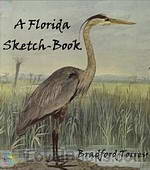 A Florida Sketch-Book
A Florida Sketch-Book
This is a series of late-19th Century essays about Florida’s flora & fauna written by a Massachusetts-based naturalist. | |
By: Anne Wales Abbott ed. (1808-1908) | |
|---|---|
 Autumn Leaves, Original Pieces in Prose and Verse
Autumn Leaves, Original Pieces in Prose and Verse
The pieces gathered into this volume were, with two exceptions, written for the entertainment of a private circle, without any view to publication. The editor would express her thanks to the writers, who, at her solicitation, have allowed them to be printed. They are published with the hope of aiding a work of charity,—the establishment of an Agency for the benefit of the poor in Cambridge,—to which the proceeds of the sale will be devoted. | |
By: Amy Ella Blanchard (1856-1926) | |
|---|---|
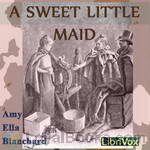 A Sweet Little Maid
A Sweet Little Maid
Dimple, the nine-year-old little girl is accustomed to being always the first. She has Bubbles, a little coloured girl as playmate and servant. One day Dimple’s cousin, Florence comes to visit her and they have a wonderful time together. But then come the rainy days and the two children easily get bored in the house… and that’s how the adventures and troubles begin. | |
By: Arthur B. Reeve (1880-1936) | |
|---|---|
 Poisoned Pen
Poisoned Pen
The many adventures of Professor Craig Kennedy were chronicled by Arthur B. Reeve (October 15, 1880 - August 9, 1936). Reeve was an American mystery writer who created 82 Craig Kennedy mystery stories. The stories have a very Sherlock Holmes type feel, In fact Kennedy has been referred to as the "American Sherlock Holmes". Along with his reporter friend, Walter Jameson, Kennedy solves many crimes and unveils mysteries using science. This book contains twelve of Professor Kennedy's adventures. The interesting thing about these stories is Kennedy uses newly discovered science from his time period, which we take for granted today... | |
By: Bhakti Seva | |
|---|---|
 The Hindu Book of Astrology
The Hindu Book of Astrology
Each person is born in or under one of the twelve signs of the Zodiac and is thus influenced throughout life by the planetary conditions at their time of birth. By referring to your sign, which is indicated by your date and month of birth you can determine your natural tendencies and what is best for you to attract. No matter what one of the twelve signs of the Zodiac you are born under, you can develop into a good and successful person if you will pay strict attention to the golden truths printed in this book. (Bhakti Seva) | |
By: James Brendan Connolly (1868-1957) | |
|---|---|
 The Trawler
The Trawler
The Trawler is a short story revolving around the trying life of a group of bank fishermen based in Gloucester. Skipper Hugh Glynn worked his men hard; some said too hard, and Arthur Snow was one who had paid the ultimate price.Arthur's close friend Simon Kippen decided he'd ask to take the place of his fallen friend aboard Hugh Glynn's vessel as a dory mate, and from there we have a tale of the open seas between Gloucester and Newfoundland where perhaps only the names and locations have changed from the countless stories of similar nature; the key being that this one, however, is first hand. | |
By: William C. Hunter | |
|---|---|
 Pep: Poise, Efficiency, Peace
Pep: Poise, Efficiency, Peace
Colonel William Crosbie Hunter was a businessman and self-help writer who was moderately popular in the early 20th century. His books set forth his personal philosophy on health, happiness, human relations, and success in the business world. Pep, billed as "A book of how's not why's for physical and mental efficiency," was published in 1914 and went through several editions. (Introduction by Pleonic) | |
By: Frances Brooke | |
|---|---|
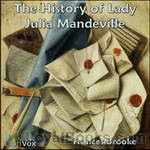 The History of Lady Julia Mandeville
The History of Lady Julia Mandeville
Lady Julia, the daughter of the Earl of Belmont, and Mr. Henry Mandeville are falling in love. Though Henry is like a family friend, this love is not welcomed because the Lady Julia is promised to someone else (or so Henry thinks). When they discover that they can be together after all, it is much too late. This novel, written in the form of letters, as are a lot of 18th century novels, shows their beautiful and echoing love story through the eyes of many people. | |
By: Frances Moore Brooke (1724-1789) | |
|---|---|
 History of Emily Montague Vol 1 (Dramatic Reading)
History of Emily Montague Vol 1 (Dramatic Reading)
The novel takes place 10 years after the Battle of the Plains of Abraham in 1759 when Quebec becomes a British colony. Written as a collection of letters, the story follows the relationships between Edward Rivers (a British soldier), his friend, John Temple (rather a cad), Emily Montague (a young British woman), and her dearest friend, Arabella Fermor (a flirtatious drama queen). Giving glimpses into the new frontier discoveries of Canada, one not only peeks into the personal relationships of these characters but gets swept away by the enticing descriptions of the "new world." This is Volume 1 out of 4. | |
By: Westminster Assembly | |
|---|---|
 Westminster Larger Catechism
Westminster Larger Catechism
The Westminster Larger Catechism, along with the Westminster Shorter Catechism, is a central catechism of Calvinists in the English tradition throughout the world. The Westminster Shorter Catechism was to be "easier to read and concise for beginners" and the Larger Catechism was to be "more exact and comprehensive". The Catechism was completed by the Westminster Assembly in 1647. It was then adopted by the General Assembly of the Church of Scotland in 1648 and (with modifications relating to the civil magistrate) by the Presbyterian Synod of New York and Philadelphia in 1788. | |
By: Daniel G. Brinton (1837-1899) | |
|---|---|
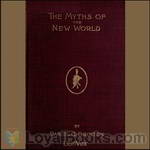 The Myths of the New World
The Myths of the New World
The Myths of the New World's full title describes it as.. " a treatise on the Symbolism and Mythology of the Red Race of America", an attempt to analyse and correlate scientifically, the mythology of the American Indians. Note: Brinton advocated theories of scientific racism that were pervasive at that time. | |
By: William E. B. Du Bois (1868-1963) | |
|---|---|
 The Quest of the Silver Fleece
The Quest of the Silver Fleece
The Quest of the Silver Fleece is a story of romance, race economics and politics set around the 1900s. Here, a traditionally educated boy and an unschooled “swamp girl” each begin a journey toward love, ambition and redemption in the “Old South.” | |
By: Captain Charles de Créspigny | |
|---|---|
 Where the Path Breaks
Where the Path Breaks
The soldier awakened from the brink of death eight months after his injury on the battlefield. As he slowly regained his senses and his memory, the face of a girl creeps into his mind, and he soon recalls that this girl had married him out of pity on the day he went into battle. The wedding had been a true "war wedding".".Inspired by the face and the vague recollections which were taking shape, and after learning that his day-bride had since remarried (believing her day-husband killed in action), the battle-scarred soldier decides to re-invent himself, take on a new name, and seek a new life... | |